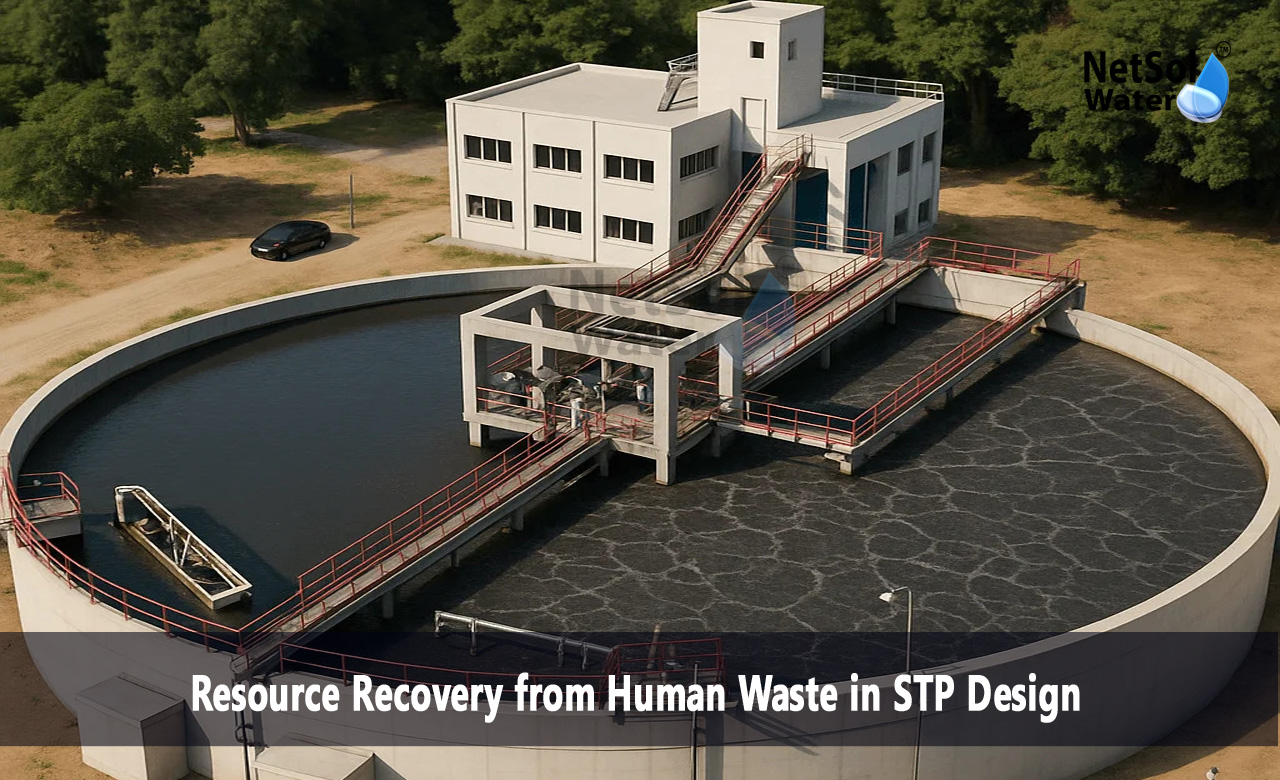Resource Recovery from Human Waste in STP Design
Resource Recovery from Human Waste in STP Design changes waste into useful products and energy. This approach protects water and reduces greenhouse gases while creating value for communities. A well-planned sewage treatment plant can capture nutrients that support crops. It can produce biogas that fuels engines and heaters. It can also clean water so people can use it again for irrigation and for some industrial tasks. Engineers design systems to match local needs and local laws. Careful choices in treatment steps make recovery safe and cost effective.
Nutrient Recovery
Nutrient recovery helps close the loop between sanitation and farming. It keeps useful minerals in local cycles and it reduces demand for new fertilizer. Let us have a look on some methods that capture nutrients and turn them into useful products.
Phosphorus Recovery Methods
Phosphorus settles in sludge and in concentrated process streams. Struvite precipitation forms a crystalline fertilizer from magnesium, ammonium and phosphate. Engineers control pH and mixing to form stable granules. Mechanical thickening and dewatering concentrate solids and make phosphorus easier to remove. These steps lower landfill needs and create a product that farmers can use.
Nitrogen Recovery Methods
Nitrogen appears in urine and in mixed wastewater. Biological systems can remove nitrogen by converting it to gas for safe release. For recovery, designers can capture ammonium through absorption or through membrane systems. Captured ammonium can become liquid fertilizer after treatment. These methods reduce the need for synthetic nitrogen and make use of a local input.
Read: Sewage Treatment Plant Manufacturer
Energy Recovery Through Anaerobic Digestion
Energy recovery turns organic content into useful gas and it reduces sludge mass. It gives plants a steady fuel source and lowers energy bills. Let us have a look on some steps that convert organic waste into usable energy.
Biogas Production
Anaerobic digesters host microbes that break down organic matter without air. Microbial action produces methane-rich biogas that can power engines and heaters. Stable loading and steady temperature control keep digestion efficient. Digesters also lower pathogens and shrink sludge volumes. Designers size digesters to match the feed and to allow for safe mixing.
Biogas Upgrading and Uses
Raw biogas can feed combined heat and power units to make electricity and heat for the plant. Upgrading removes carbon dioxide and impurities to create biomethane. Upgraded gas can feed vehicles or local gas grids after compression. These options improve plant self sufficiency and create saleable energy.
Sludge Valorization and Composting
Sludge valorization turns residual solids into soil products that support plant growth. It reduces transport cost and creates marketable material. Let us have a look on some approaches that change sludge into compost and into dry products.
Composting and Drying Techniques
Composting mixes sludge with bulking agents and exposes the mix to oxygen and heat. Microbial heat reduces pathogens and stabilizes the material. Windrow systems and in vessel systems fit different space and scale needs. Drying beds and thermal dryers reduce moisture and cut transport weight. These steps make handling easier and improve product shelf life.
Biosolids for Soil Amendment
Processed biosolids can meet safety standards for land application. Testing and certification help ensure safe use near crops. Proper application adds organic matter and improves soil structure. Selling or using biosolids on local fields returns nutrients to the land and creates a revenue stream.
Water Reuse and Treated Effluent Recycling
Water reuse helps stretch freshwater supplies and supports local resilience. It lowers demand on rivers and on groundwater. Let us have a look on some reuse options that meet different end uses and safety needs.
Non Potable Reuse
Treated effluent can serve landscape irrigation and industrial cooling. A multi barrier approach with sedimentation filtration and disinfection ensures safety for these uses. Storage facilities and routine monitoring support steady supply. Reuse systems cut freshwater needs and lower utility costs.
Urban Reuse and Irrigation
Cities can use reclaimed water for parks and for street cleaning. Farms can use higher quality effluent with monitoring to protect food safety. On site reuse in institutional campuses reduces distribution losses and saves money. Smart allocation matches treatment level to the end use.
Integration in STP Design and Operation
Integration makes sure that resource recovery gives steady results and does not complicate plant operation. Good design keeps processes accessible and flexible. Let us have a look on some design choices that support recovery and long term success.
Process Layout and Fit
Designers place recovery units where flows concentrate and where maintenance access remains simple. Early separation of urine and solids reduces load on downstream units. Modular units let owners add recovery steps over time and reduce initial cost. Clear flow paths help sampling and process control.
Monitoring and Cost Benefits
Monitoring tracks nutrient capture gas yield and water quality. Good data helps teams optimize the plant and avoid surprises. Financial models can show payback from fertilizer sales energy savings and lower disposal cost. These results help secure funding and build trust with local stakeholders.
Conclusion
Resource Recovery from Human Waste in STP Design can change how communities manage sanitation and resources. It can provide fertilizers energy and usable water while lowering disposal needs and emissions. It can work at small and at large scales with clear benefits for local users and for operators. If you want help to plan recovery in your project please get in touch for more information or request a consultation.
Contact Netsol Water at:
Phone: +91-9650608473, Email: enquiry@netsolwater.com



